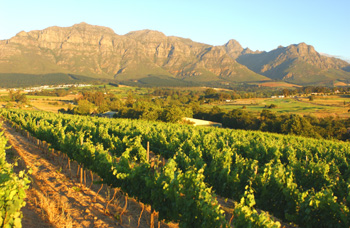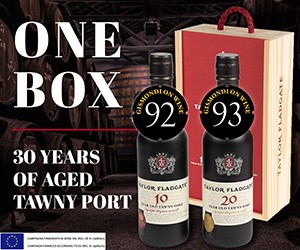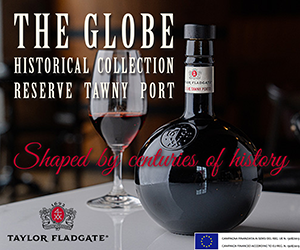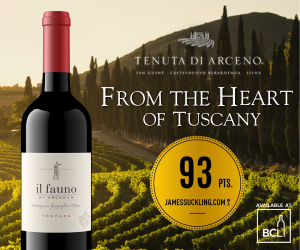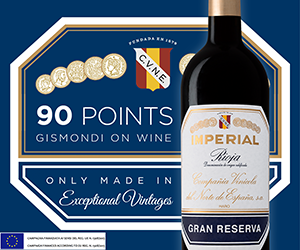Wine Spectator columnist Matt Kramer turned the South African wine industry upside down in March when he dared to ask the question, "Why isn't South African wine better?" Kramer suggested the South Africans have failed to calibrate their palates (by tasting the world's best wines blind) in the same manner California wineries did when they first looked to gain favour on the highly competitive international wine market.
Wine Spectator columnist Matt Kramer turned the South African wine industry upside down in March when he dared to ask the question, "Why isn't South African wine better?"
Kramer suggested the South Africans have failed to calibrate their palates (by tasting the world's best wines blind) in the same manner California wineries did when they first looked to gain favour on the highly competitive international wine market.
Presumably by calibrating their palates California's wine makers came to understand what great wine tastes like and set about making sure their labels reflected the new found knowledge.
I'm sure Kramer's comments, coming on the heels of his first ever visit to the Cape, irked the wine establishment there but the fact is a lot of South African, post-sanction wines, have yet to dazzle this writer and many others.
Despite some outstanding individual wines and varietal gains with sauvignon and shiraz, in many ways the South African wine industry resembles the British Columbian experience. Once you get by the top 20 per cent of producers the rest appear to be along for the ride.
Today we look at the wines of the former KWV Co-operative formed on January 8, 1918 by the South African wine farmers, to act as a spokesperson, adviser, producer and marketing innovator to the South African wine industry in general, and to its farmer members, in particular.
Since 2003, KWV shares are traded freely and are no longer restricted to just its 5000 farmer members. More to the point KWV's regulatory and administrative functions once performed on behalf of the state have been transferred to the newly established South African Wine Industry Trust leaving the folks at KWV to function as any other South African winery.
The new KWV produces a series of brands and we begin our tasting with a Robert's Rock label initially designed for the European supermarket buyer and now a reliable everyday South African brand worth investigating.
The Robert's Rock Chenin Blanc / Chardonnay 2002 come from the sizable Western Cape appellation and offers up a refreshing style of white wine with a touch of mineral, green apple skin and lime flavours. Clean fresh and tasty it's hard to beat for the price.
The KWV Merlot 2001 has an improved nose showing black cherry fruit and minty leafy menthol aromas but not much else. The palate is thin with fairly bitter tannins and what fruit there is acidic. The finish is dry and alcoholic. Most anything out of Chile would be a better choice at this price range.
The KWV label will forever be linked to Roodeberg in Canada a blend that has enjoyed a long history in B.C. liquor stores. KWV Roodeberg 2001 has transformed itself into a more appealing New World style although there is still work to be done.
The blend is a mix of cabernet sauvignon, merlot, shiraz and ruby cabernet. Cherry/chocolate/vanilla aromas mark the nose of a mostly round red but the flavours are less than intense. There some obvious acidity poking through its earthy flavours and dry finish. Barbecued meats would help to smooth out the edges.
A side-by-side comparison of cabernets begins with KWV Cabernet Sauvignon 2001. This entry-level red has a vibrant, varietal nose of black currant fruit that jumps out of the glass. On the palate the fruit persists and is balanced off by crisp mouth-watering acidity. A solid mid-weight red with medium length that finishes spicy and a touch dry. Grilled meat dishes are the answer here.
Cathedral Cellar, KWV's top-of-the-line label, takes its name from the cathedral-like windows that adorn the end walls of the original winery at Paarl. In the case of the Cathedral Cellar Cabernet Sauvignon 1998, look for an open inviting black cherry fruit nose streaked with vanilla, cedar and leather. The styling is more Bordeaux than California as evidenced by its medium mid-palate weight and plenty of dry tannins in the finish.
Perhaps the best of the reds tasted is the Cathedral Cellar Shiraz 1999 with its open fragrant vanilla (American oak) spicy nose. On the palate its light and again, showing that mid-palate acidity with a plummy, meaty, gamy aftertaste. This is a spicy, easy-sipping style shiraz that slides down easy if you don't mind the acidity.
As you can see the tasting produced mixed results. Proof perhaps that Mr. Kramer's remarks weren't entirely off the mark.
KWV, WESTERN CAPE, SOUTH AFRICA
Wine: Robert's Rock Chenin Blanc / Chardonnay 2002
Price: $8.99
UPC: 748294420196
Score: 13.5/20
Comments: Clean fresh and easy top sip and under $9.
Wine: Merlot 2001
Price: $12.99
UPC: 748294044309
Score: 12.5/20
Comments: Light and thin.
Wine: KWV Roodeberg 2001
Price: $12.99
UPC: 748294111117
Score: 14/20
Comments: Cherry chocolate nose dry earthy flavours.
Wine: Cabernet Sauvignon 2001
Price: $12.99
UPC: 748294044101
Score: 14/20
Comments: Vibrant varietal nose of black currant fruit.
Wine: Cathedral Cellar Cabernet Sauvignon 1998, Coastal Region
Price: $18.99
UPC: 748294066110
Score: 15/20
Comments: Cherry fruit nose streaked with vanilla.
Wine: Cathedral Cellar Shiraz 1999
Price: $18.99
UPC: 748294420608
Score: 15/20
Comments: Spicy, easy-sipping style shiraz

 quicksearch
quicksearch

